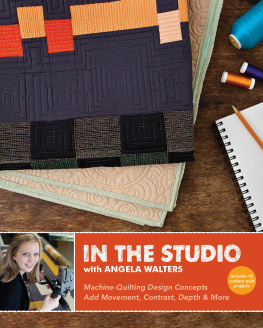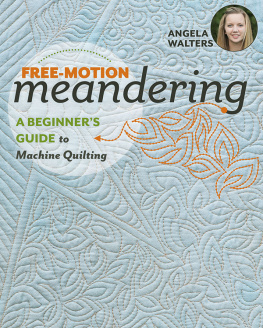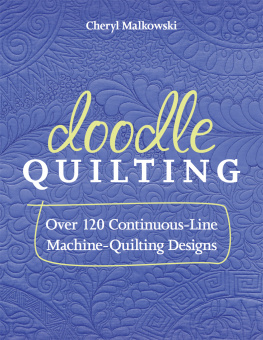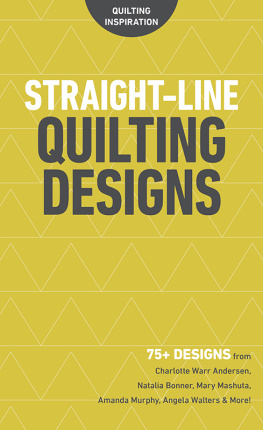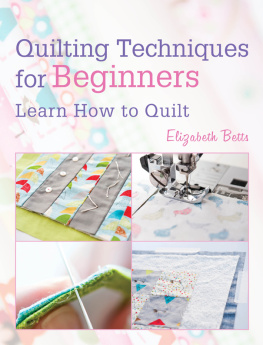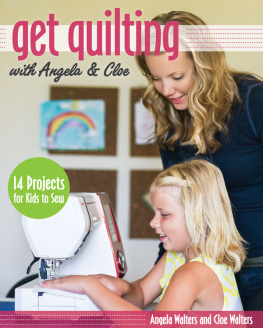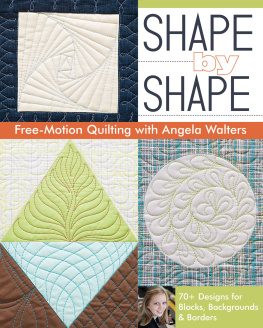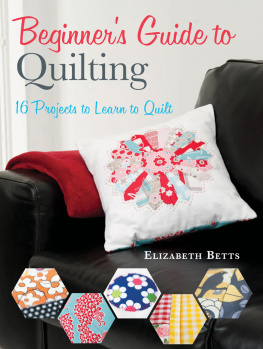
Dedication
To Jeremy, Drake,
Cloe, and Hailey
my biggest supporters!
Acknowledgments
This book wouldnt be possible
without the people who helped
make most of the quilts:
Georgieanna Martin
Jessica Harrison
Mary Workman
Shea Henderson
Alex Ledgerwood
Kathy Limpic
Emily Cier
A very special thanks goes out to my editors and friends at C&T Publishing: Susanne, Liz, Sadhana, April, and a dozen others behind the scenes who have worked so hard to make me feel like a member of their family.
A final thanks goes out to Robert Kaufman Fabrics for supplying the fabric for the quilts in this book.

Preface
As a designer, I love what I do and am very grateful to work in the independent craft world where I have a chance to cross paths with other inspired designers and creators. I had the great opportunity of meeting Angela last year during one of our Quilt Markets, and I was immediately taken by her enthusiasm, passion, and warmth. We excitedly discussed the show and our new projects and bonded as we learned more about each other. This quickly led to a show and tell where I gave her the tour of my booth, and then we ran over to Tula Pinks booth so I could see Angelas unique quilting technique and style. WOW! I was immediately smitten with her skills and fresh approach. Since that day, weve been great supporters of one anothers work.
That is why I am so honored and proud to tell you about this book. Angela is an artist, and her unique perspective on modern quilting will unlock a world of new ideas and experiences for you. First and foremost, she believes that machine quilting is another layer of art on a quilt, not just a function of utility. I love this! She presents loads of beautiful eye candy, and plenty of inspiration to open the door for your creativity. Angelas goal is to empower you and get you to think differently, to encourage you to experiment, and ultimately to enhance your projects. Youll love every tidbit of beauty, design, and technique, and youll especially love meeting her. Enjoy, and happy, happy quilting!
~Amy Butler, textile designer & author of Style Stitches
Introduction
The Form and Function of Quilting
What does this mean, anywaythe form and function of quilting? Quilting is both a functional element and an art form. The basic function of quilting is to hold together the three layers of a quilt. But just because quilting is functional doesnt mean that it cant also be an art. In fact, I often refer to the quilting as another layer of art on a quilt.
So what does this mean? How can quilting add to the quilt? Thats exactly what this book is for! I am going to show you how to use quilting to achieve different effects in quilt tops. Quilting can add depth, for instance. Quilting can tell a story, and quilting can add movement to a quilt top.
Each chapter of this book demonstrates a different use of quilting. Ive included tips and ideas to help you achieve the results you want. Each chapter also includes directions for a quilt designed especially to use the techniques that youve just learned in that chapter. These quilts range in size from small to large, and they use a number of different techniques. Of course, you dont have to make the quilts in this bookyou can practice the quilting designs on plain pieces of fabric or apply the suggestions to quilts you make in the future. You also dont have to quilt the projects exactly as Ive shown. Feel free to try out your own ideas on the quilt tops.
A Few Clarifications
First of all, Im not against allover quilting designs. There are some quilts for which that is the best choice. For instance, quilts with a lot of little pieces that tend to blend together are great candidates for an allover design.
Second, you dont need a longarm quilting machine to use the techniques in this book. I am always quick to point out that Im a machine quilter, not just a longarm quilter. Although a longarm quilting machine is what I use, dont feel that you must have one before you can quilt custom designs. That said, if you are a prolific quilter or undertake a lot of large projects, it may be worth looking into buying or renting a longarm. It makes the quilting a little easier.
Finally, in this book I suggest concepts that work best for me. They may or may not be the best for you. If you come across an idea you dont love, tweak it a bit to make it your own. Quilting is a lot like handwriting. There are a lot of ways to write the letter A, just as there are a lot of ways to quilt a swirl. Make these ideas that you own!
My hope is that this book will make you think of quilting as more than just a way to keep the layers of a quilt together. I want you to feel empowered to experiment with different uses of quilting and different methods. I want you to love quilting as much as I doits the part thats the most fun! So heres to happy quilting in your future.

QUILTING
TELLS A STORY
Sometimes when I am stumped about how to quilt a project, I ask the piecer to tell me the story behind the quilt. When I find out why someone made a quilt and the important things about it, deciding how to quilt it is usually a lot easier.
You can use the story behind a quilt as the inspiration for your quilting designs. Or you can use the quilting itself to help tell the story. Either way, this is one of the most gratifying ways to quilt a piece, and it will help make the quilt come to life!

Using Words and Designs to Tell a Story
When you want to tell the story literally, use meaningful words as the quilting design. This isnt a new method, of course. Quilters have been quilting words on quilts since at least the 1800s. Its a great way to convey a message or add meaningful information.

I made the Ribbons quilt in honor of two women in my family who battled cancer. One of them won her battle, but sadly her sister succumbed to the disease. I incorporated cancer awareness ribbons for both cancers into the quilt top, but I wanted the quilting to help tell their story, too.

I quilted several words to describe both of the womensister, mother, friend, daughter, fighter, supporter. For an extra-special touch, I carefully quilted the words sisters forever backward on the top so that they can be read when the quilt is viewed from the back.
I didnt use words alone to tell the story. I also added angel wings to the green ribbon to show that one of the women is no longer with us.
Even though the quilt top makes a strong statement by itself, the quilting really helps add to the background story and makes this quilt even more special.

